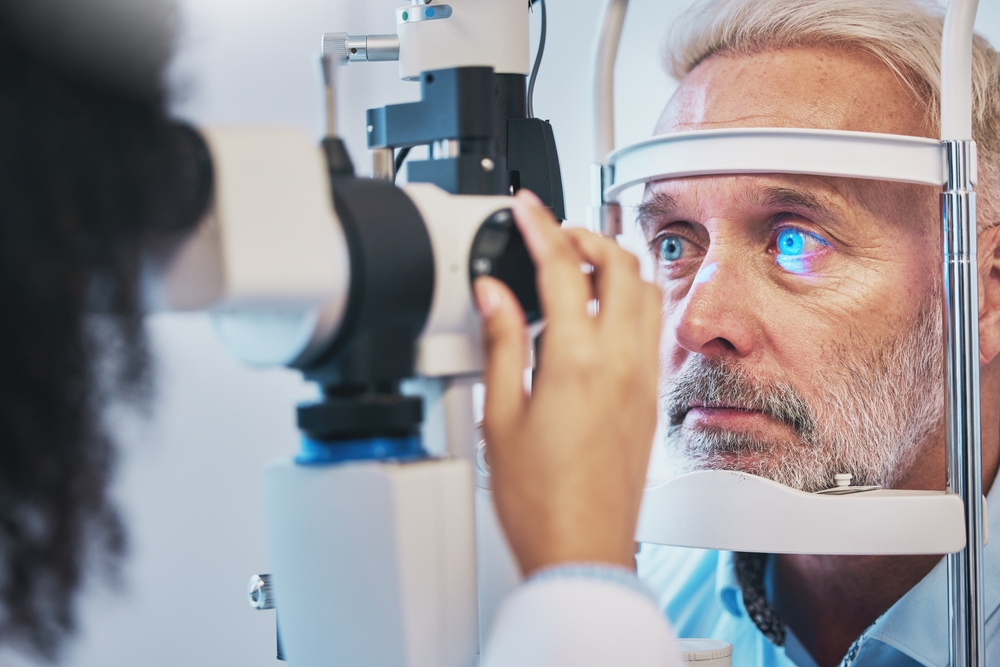How Young Can You Be and Still Develop Glaucoma?
January 9, 2024
Glaucoma is a group of eye conditions characterized by damage to the optic nerve. While glaucoma is a common issue for people over sixty years old, it’s important that everyone knows about glaucoma.
Keep reading to learn more about glaucoma, including whether or not you can develop glaucoma young!
What Is Glaucoma? 
Glaucoma causes damage to the optic nerve. This nerve is responsible for sending visual information from the back of your eyes to your brain to process the information and produce the image you see.
The optic nerve needs to be in good condition in order to have clear vision. Often, optic nerve damage happens because of high pressure in the eye, but glaucoma can also develop in patients with regular eye pressure.
At What Age Can Glaucoma Develop?
Glaucoma is a leading cause of vision loss for people who are older than sixty, but this doesn’t mean you have to be an older adult to develop glaucoma. Individuals of any age can develop the condition.
In fact, newborns can even be born with glaucoma, and sometimes, it develops in children in the first few years of their life. Underlying causes like blocked drainage or an eye injury can damage the optic nerve and cause glaucoma in babies and children.
Are you experiencing symptoms of glaucoma?
What Are The Different Kinds Of Glaucoma?
One of the main concerns with glaucoma is that it often doesn’t have any warning signs. The symptoms vary depending on the type of glaucoma you have and how severe it is.
Let’s examine the five main types of glaucoma: open-angle glaucoma, acute angle-closure glaucoma, normal-tension glaucoma, pigmentary glaucoma, and glaucoma in children.
 Open-angle Glaucoma
Open-angle Glaucoma
Open-angle glaucoma is the most common type of this eye condition. With open-angle glaucoma, the drainage angle in the iris and cornea is open but doesn't work as it should.
This can slowly increase pressure in the eye. Symptoms of open-angle glaucoma don’t appear in the early stages but eventually include:
- Some blind spots in the peripheral vision
- Issues with the central vision in later stages
Angle-Closure Glaucoma
Angle-closure glaucoma usually happens when the iris starts to bulge from drainage blocks. This means the fluid can’t move through the eye correctly.
This type of glaucoma can happen slowly or suddenly. The symptoms of angle-closure glaucoma include:
- Headaches
- Intense eye pain
- Nausea and throwing up
- Blurry vision
- Halos around lights
If you have sudden symptoms like these, go to an emergency room or contact your eye doctor for assistance. Acute angle-closure glaucoma requires immediate treatment.
Normal-Tension Glaucoma
With normal-tension glaucoma, the underlying causes of the issue are often unclear. The optic nerve may have a sensitivity or be caused by a buildup of fatty deposits in the arteries.
This type of glaucoma also doesn’t have symptoms in the early stages. As it progresses, you may notice:
- Blurry vision that happens gradually
- A slow loss of side vision
Pigmentary Glaucoma
With pigmentary glaucoma, small granules of pigment from the iris fall off and block the drainage in the eye. Even some routine daily activities, such as jogging, can move pigment granules and cause a blockage.
When the eye fluids can’t drain properly, eye pressure increases, causing glaucoma. The symptoms of pigmentary glaucoma include:
- Noticeable halos around lights
- Blurry vision when you exercise
- Slowly losing your peripheral vision
Glaucoma in Children
When babies or kids have glaucoma, it may be because of an underlying medical condition or an injury. An ophthalmologist or other healthcare professional may need to diagnose the cause of the glaucoma.
Symptoms of glaucoma in children include:
- Infants who blink often
- Infants with a cloudy eye
- Children with blurry vision
- Headaches
- Worsening nearsightedness
If a baby has glaucoma at birth, it is called congenital glaucoma.
Are you experiencing changes in your vision?
 What Are the Risk Factors For Glaucoma?
What Are the Risk Factors For Glaucoma?
Since glaucoma can impact your vision before you even notice any symptoms, it’s critical to know factors that increase your risk of glaucoma.
These risk factors include:
- Being over fifty-five
- Having a family history of glaucoma
- Dealing with an eye injury
- Being of Hispanic, Asian, or Black heritage
- Taking corticosteroid medications
- Having certain medical conditions like migraines or diabetes
If you have some of these risk factors, it’s essential to make an appointment with an experienced eye doctor to check your eyes.
Set Up An Eye Exam At Arlington Eye Center
Glaucoma can worsen with time, and in some cases, it can cause severe symptoms that require emergency attention. If you notice any potential symptoms of glaucoma or have many risk factors, you don't want to wait to get help.
Instead, make an appointment for an eye exam at Arlington Eye Center. Our experienced ophthalmologists will examine your eyes and assess your symptoms to determine the best way to address your eye issues.
Are you experiencing symptoms of glaucoma? Schedule an appointment at Arlington Eye Center in Arlington, VA, today!



